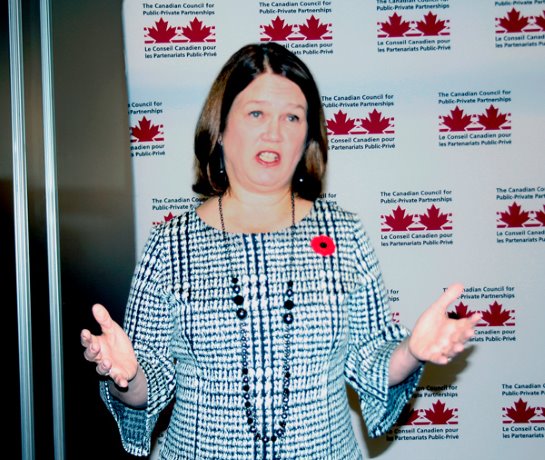Basic infrastructure needs that most Canadians take for granted are missing in far too many indigenous communities and public-private partnerships (P3) can help fulfil those needs, said Jane Philpott, Canada’s first minister of indigenous services.
"What most of us consider essential for our quality of life is absent from the daily reality for thousands of Canadians," said Philpott to a group of delegates in her opening keynote address during the Canadian Council for Public-Private Partnerships 25th annual conference held in Toronto Nov. 6 and 7.
"Waiting for a more convenient time for us to address these (infrastructure) gaps is not an option. I’m here today to talk about my role in this and to challenge you to find yours."
Philpott emphasized the challenges facing First Nations communities, stating it has been estimated the infrastructure deficit alone may be as high as $30 to $40 billion.
"I hope you will see the potential for P3s in indigenous communities. I don’t need to convince anyone in this audience of the success of the model," she said.
"The P3 model is a great tool for building schools and developing water and wastewater facilities, all-season roads, broadband connectivity and energy infrastructure."
While there has been some progress on critical infrastructure being built in indigenous communities, there is still a lot more to do, Philpott noted, adding the ministry has provided funding for water projects, lifting long-term drinking water advisories and building housing and schools in indigenous communities.
"Where I particularly see the potential for P3s to have an impact in indigenous communities is through the fantastic ability to bring design innovation, to address risk transfer and the full costing of assets including the very important role of operations and maintenance," Philpott explained.
She also discussed some early P3 project success stories in indigenous communities including the Tlicho all-season road in the Northwest Territories.
"It’s going to connect the community, allow for increased economic development and reduce the tremendous cost of transporting goods and services in and out of Whati (First Nations Community)," Philpott noted.
She encouraged leaders in the room to be part of the solution in addressing infrastructure gaps with P3s.
"Some of you will view your role in P3s and addressing infrastructure gaps for indigenous people as a matter of corporate social responsibility. Others may view it from the perspective of enlightened self-interest. Either way, I hope you have figured out that it is smart to invest in indigenous infrastructure, communities and people," stated Philpott.
She suggested a few steps to get started.
"Learn more about these successful projects in indigenous communities and consider partnering with indigenous communities in ways that benefit both parties, creating opportunities for yourselves along with jobs and economic growth for communities," said Philpott.
"Consider policies you can implement now around hiring indigenous employees in your company. Explore some of these models to finance, design, build, operate and maintain infrastructure in indigenous communities.
"If there are any additional steps that our government can take to unleash the potential of P3s in this space, please let us know."











Recent Comments
comments for this post are closed